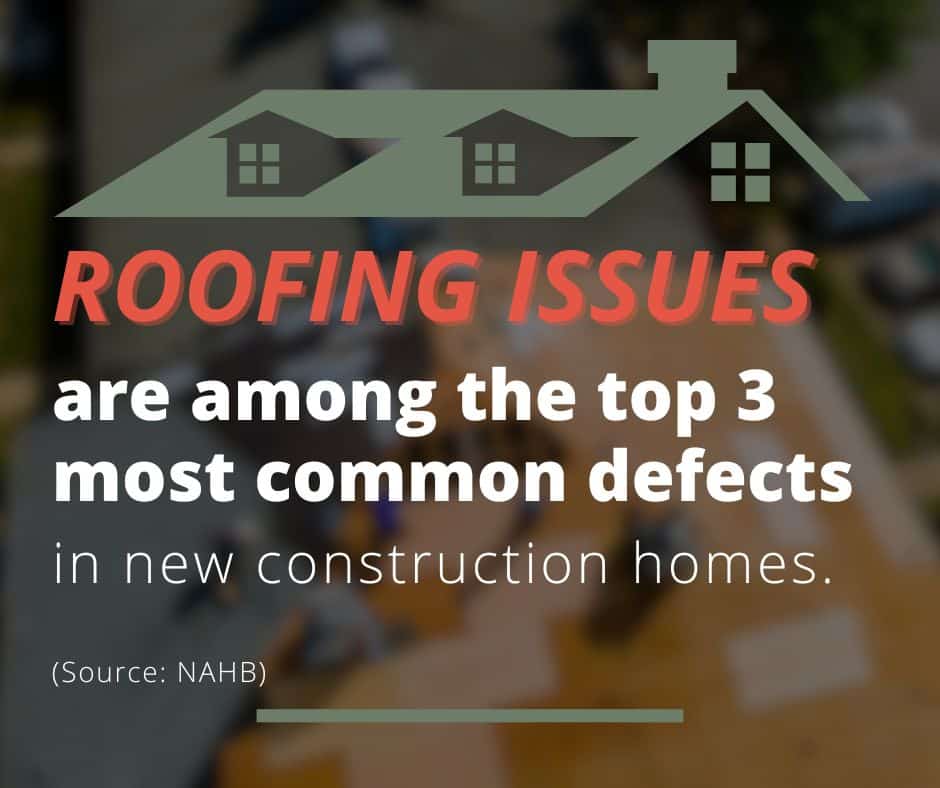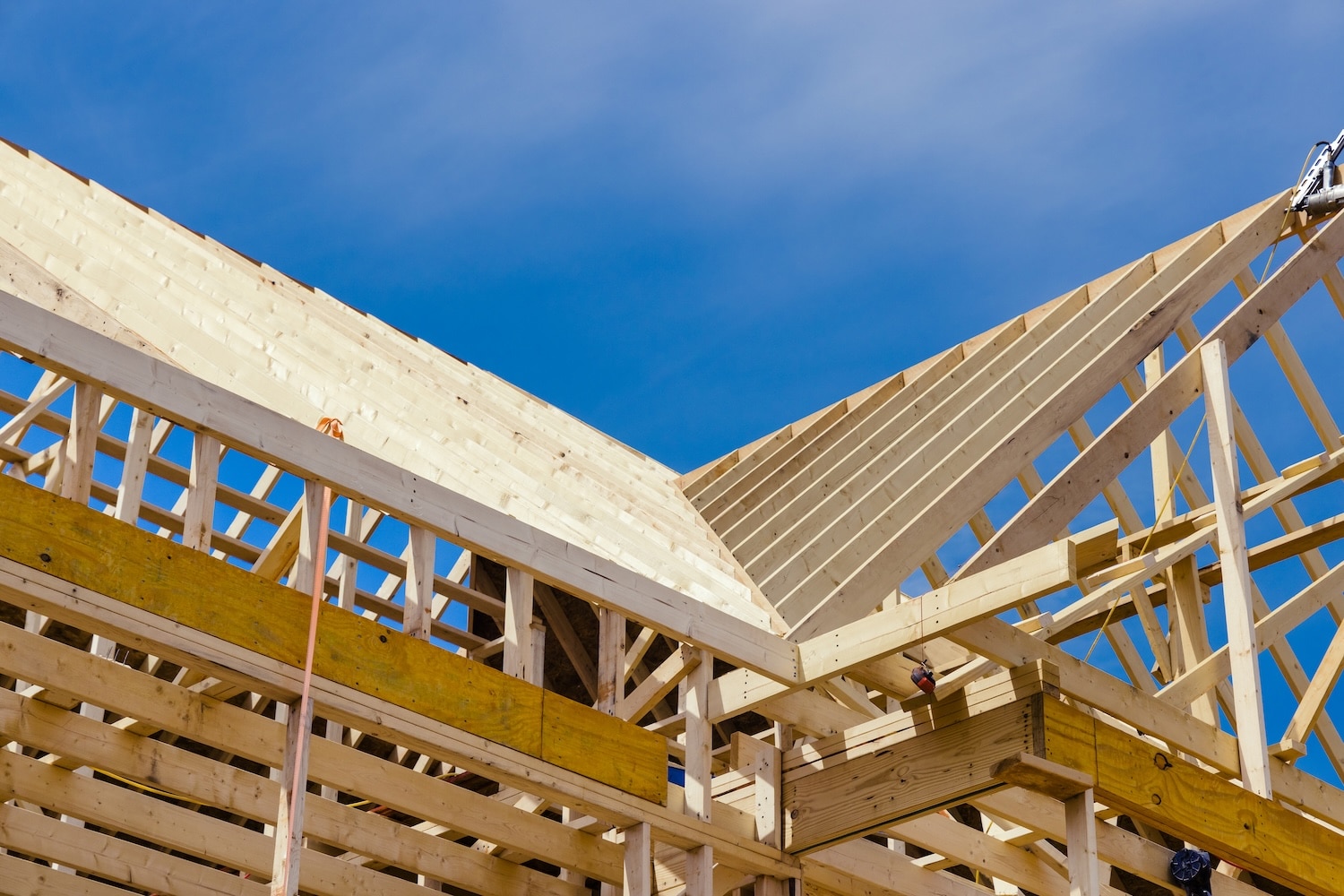A new construction home may look flawless on the surface, but when it comes to the roof, looks can be deceiving. Many buyers assume a brand-new roof is automatically in great shape. However, at Tier-1 Pro, we see roofing issues in new builds all the time. Builders often rely on subcontractors, and with the pace of today’s construction, mistakes happen more than buyers realize.
Even if a home comes with a builder’s warranty or was signed off by a builder’s inspector, that does not guarantee everything is perfect. Builder inspections are often limited in scope and can miss key issues. This is why an independent inspection is so important. Here are some of the easiest red flags to spot in a new construction roof, and why buyers should always have their new home professionally inspected before closing.
Table of Contents
ToggleWhy Roofing Issues Happen in New Builds
With fast-paced construction schedules and multiple subcontractors involved, roofing mistakes are common in new builds. Issues often stem from:
- Rushed installations to meet deadlines
- Inexperienced or rotating crews
- Poor material storage or handling on the job site
- Lack of oversight by supervisors or project managers
- Corners being cut to control costs
A builder’s warranty might cover some of these problems, but only if they are documented before your warranty period ends. A professional roof inspection helps protect your investment by identifying issues early, before they turn into leaks or major repairs.

Easiest Red Flags to Watch For
1. Uneven Rooflines
Step back and check the overall roofline. It should appear straight and level. If you see sags, dips, or waves, it could indicate poor framing, uneven decking, or problems with the roof structure itself.
2. Shingle Gaps or Overhang
Shingles should lie flat and form a continuous, uniform surface. Gaps between shingles, overhang that extends too far, or exposed underlayment are signs of sloppy installation and can quickly lead to water intrusion.
3. Exposed Fasteners in the Wrong Places
On asphalt shingle roofs, nails should not be visible on the field of the roof. Exposed nails that are not sealed properly can rust and cause leaks. We frequently spot this during new construction inspections in Central Florida.
4. Poor Flashing Installation
Flashing is one of the most important elements of a watertight roof. It protects valleys, chimneys, walls, and other roof transitions. If flashing looks buckled, loose, improperly sealed, or missing, it is a major red flag. Improper flashing is one of the most common defects we document in new construction homes.
5. Missing Drip Edge
The drip edge helps direct water into gutters and protects the edges of the roof deck. Sometimes builders skip it entirely or install it incorrectly. Without it, you are likely to see fascia rot or water damage over time.
6. Inadequate Ventilation
Proper roof ventilation is critical to prevent moisture buildup and extend the life of your roof. If soffit vents or ridge vents are missing, blocked, or installed improperly, attic heat and humidity can cause long-term damage.

Other Recommended Maintenance
Even after passing inspection, your new roof will require routine care:
- Schedule roof inspections every few years to catch early issues.
- Keep gutters clear of leaves and debris to prevent backups.
- Check attic spaces for signs of moisture or mold.
- Trim trees away from the roof to avoid shingle damage.
Proactive maintenance helps extend your roof’s lifespan and prevents small problems from becoming expensive repairs.
When to Call a Professional
New construction homes are often marketed as “perfect.” In reality, that is rarely the case, and builder inspections may not tell the full story. You should bring in an independent professional like Tier-1 Pro Home Inspections:
- Before your final walkthrough, to document defects and ensure they are corrected before closing
- Before your builder warranty expires, so any problems can be addressed while you are still covered
- If you see visible roofing concerns, such as sagging, gaps, or staining
- If you want to be certain your roof was built to proper standards and will protect your home
Remember, builders and builder-paid inspectors are working for the builder. An independent inspection protects your interests and ensures your new roof meets proper standards.
Conclusion
Just because a roof is new does not mean it is flawless. In fact, roofing defects are some of the most common issues we find in new construction homes. The good news is many of these problems can be identified and corrected early if you know what to look for and if you hire a qualified inspector.
At Tier-1, know exactly what builders tend to miss. If you are buying a new home or if your builder warranty period is coming up, contact us today to schedule a thorough inspection.

